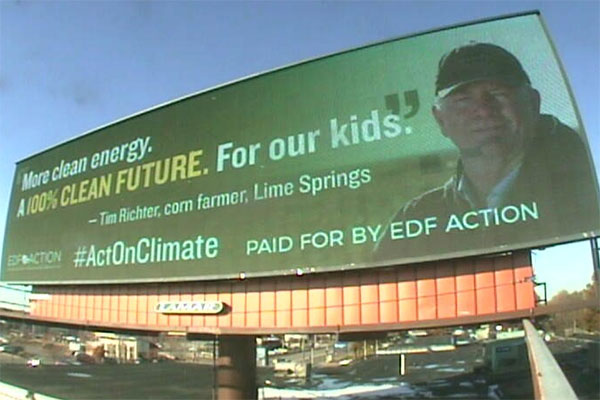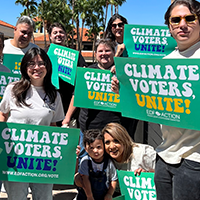
It’s time to move to 100% clean
What does it mean to move to 100% Clean?
As part of a global solution to the climate crisis, the United States must drastically reduce climate pollution by creating a 100% clean energy economy no later than 2050.
This means replacing most carbon- and toxic-emitting energy sources with wind, solar, and other clean energy sources across all sectors of our economy — from transportation and manufacturing to the electric power sector. It also means using strategies to remove climate pollution already emitted
Take action
Congress: Support climate action now
We need our leaders to put forth smart solutions that move our economy toward a 100% clean future
Contact your Representatives100% Clean is 100% achievable

American ingenuity has unlocked innovative solutions that have put humans on the moon, cured diseases, and ushered in the digital age. That same spirit is needed to transition us to a 100% clean economy where all people prosper.
What will it take?
Getting more of our energy from clean sources, such as wind and solar, will help curb climate pollution. But to get to 100% clean, we will need other strategies. Potential breakthrough technologies are on the horizon, from utility-scale energy storage, which can enable us to use far more renewable power, to innovations that are transforming transportation, to protecting forests and smart farming practices. New means of capturing and storing carbon pollution already emitted are also under development and will be critical to get to 100% clean
In the last decade, solar energy prices have dropped nearly 90%. Wind power is almost 70% cheaper. 100% Clean is closer than you might think.
Who will gain?
A cleaner, healthier and stronger economy benefits everyone. With the right policies in place, we can:
- Employ millions to rebuild our nation’s infrastructure, modernize our transportation sector, and expand clean energy, which grew faster than the economy as a whole from 2015-2019.
- Slash toxic air pollution in low income and communities of color that have historically borne the brunt of our nation’s fossil fuel legacy.
- Establish new revenue streams for farmers as they adopt practices that reduce carbon emissions.
- Make sure workers in traditional energy industries are not left behind, all while helping the country and world avoid the worst impacts of a changing climate.
Now is the time to unleash that entrepreneurial spirit to create a 100% clean future that will protect our air and water, improve children’s health, protect national security, and create millions of jobs for Americans. Let’s get to work.
We can't afford to wait!

Climate change puts our families and communities at risk by worsening wildfires, increasing the severity of hurricanes, exacerbating drought and causing record-breaking heat waves, and more.
Recent studies have found the number of extreme weather-related events per year that cost the American people more than one billion dollars has increased significantly since 1980.
What is the cost?
Over the last decade, the federal government has paid over more than $350 billion for domestic disaster response and relief; crop and flood insurance; wildfire management; and maintenance and repairs to federal facilities and federally managed lands, and more.
The Government Accountability Office estimates that these recurring costs could increase to $35 billion per year in the coming decades and to $112 billion per year by late-century.
The costs of climate change are especially felt in low income and communities of color. Impacts range from air and water pollution releases from industrial facilities that are concentrated in these communities that are poorly equipped to deal with increased flooding and stronger storms; increased risks from climate-induced heat waves due to urban heat islands and a high prevalence of outdoor jobs held by people of color, and much more.
We cannot allow our leaders to ignore these increasing threats to our health, safety, and economy. Find out how climate change impacts your state. or learn more about moving 100% clean.



